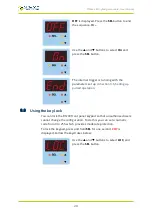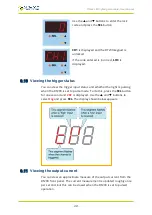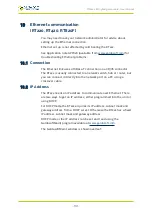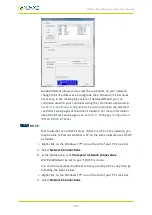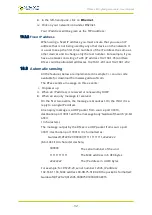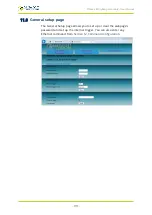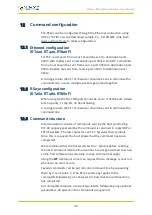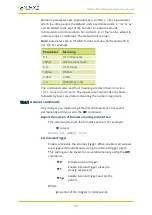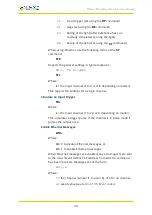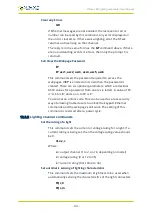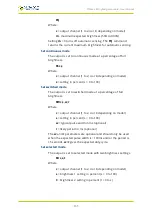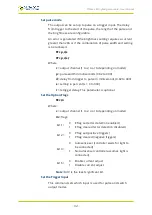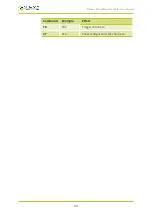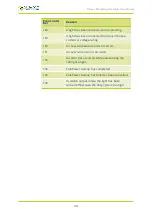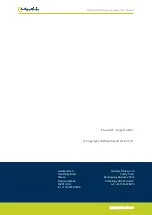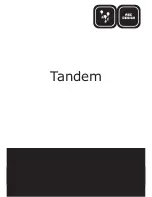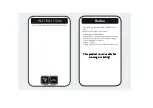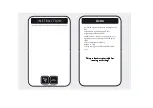
RTxxx LED lighting controllers - User Manual
12
Command configuration
The RTxxx can be configured through the Ethernet connection using
UDP or TCP/IP. You can download sample C++, C#, VB.NET code from
to allow configuration.
12.1
Ethernet configuration
(RT220, RT420, RT820F)
For TCP, commands from a host should be sent to destination port
30313 with replies sent to destination port 30312. For UDP, commands
from a host should be sent from source port 30312 to destination port
30313. Replies are sent from source port 30313 to destination port
30312.
A carriage return (ASCII 13) character should be sent to terminate the
command line, in case multiple packets get joined together.
12.2
RS232 configuration
(RT260, RT460, RT860F)
When using RS232 the COM port should be set to 115200 baud, 8 data
bits, no parity, 1 stop bit, no handshaking.
A carriage return (ASCII 13) character should be sent to terminate the
command line.
12.3
Command structure
Communication consists of commands sent by the host (controlling
PC). All output generated by the command is returned in reply UDP or
TCP/IP packets. The last character sent is
>
(‘greater than’ symbol).
Once this is received, the host knows that the command has been
completed.
We recommend that the host waits for the > symbol before sending
the next command. UDP communications are not guaranteed to arrive,
so the host software must be able to cope with lost messages.
Using the
GT
command, a host can request that a message is sent to it
whenever an error occurs.
Several commands can be put into one command line by separating
them by a semi-colon (
;
).The RTxxx sends any replies to the
commands followed by a
>
character to show that the command line
has completed.
All commands comprise a code of two letters followed by any optional
parameters. All spaces in the commands are ignored.
—
56
—





